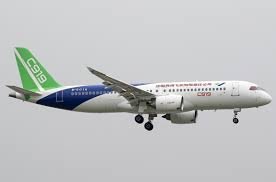Boeing Faces Turbulence as Reciprocal Tariffs Rattle U.S. Manufacturing
As the U.S. pushes forward with its "reciprocal tariffs" strategy, the policy may be backfiring—particularly for one of America's industrial icons: Boeing. The global demand for American-made products is feeling the strain, and the aircraft giant is once again caught in the geopolitical crossfire.

Just this past week, two Boeing 737 MAX aircraft slated for delivery to China were turned back. One plane, already painted in the livery of a major Chinese airline, landed in Seattle on April 19 after being rejected. A second, previously stationed at Boeing’s completion center in Zhoushan, China, was returned shortly after. While the exact reasons for the "returns" remain unclear, the message is loud and clear: geopolitics is reshaping global aviation logistics.
Bloomberg reports indicate that Chinese airlines have paused the reception of Boeing planes and suspended the purchase of related American components. Analysts from Bernstein Research estimate this could cost Boeing up to $1.2 billion in lost revenue this year alone.
Tariff Troubles Ground Boeing’s Supply Chain
The impact of U.S. tariffs on Boeing extends beyond international deliveries. The aircraft manufacturer operates on a tightly knit global supply chain. For instance, components for the 787 Dreamliner come from across the globe—wings from Japan, doors from France, fuselage parts from Italy—all assembled in South Carolina. Any disruption caused by tariffs threatens to unravel this delicate production web.
The Boeing 737 MAX 8, for example, has seen its cost per unit soar from $110 million to $230 million due to a 125% tariff hike. This sharp increase in costs could delay deliveries to airlines around the world—many of which are now reconsidering their purchase timelines.
Financially, the situation is dire. Boeing has reported six consecutive years of losses, with a total net deficit of $36 billion since 2019. Its 2024 financials were particularly grim: revenue dropped by 14.5% to $66.5 billion, and net losses nearly doubled to $11.9 billion—the worst since 2020.
China’s C919 Gains Momentum
While Boeing struggles, China is making bold moves in aerospace. On April 19, two domestically produced C919 jets, wet-leased by a Vietnamese carrier, launched commercial routes in Southeast Asia. With more than 15 routes now operating across the region and over 250,000 passengers served, China’s aerospace industry is clearly on the rise.

What’s more, the C919 has been racking up orders—nearly 1,000 confirmed so far—with expectations to deliver 75 units this year and scale to 200 by 2029. China’s homegrown jet is becoming a powerful symbol of its shifting industrial strategy, aiming to build a self-sufficient aviation supply chain less reliant on Western manufacturers.
Boeing’s historical dominance in China is rapidly eroding. In the early 2010s, China accounted for a quarter of Boeing’s global deliveries. But trade tensions and the rise of the C919 have shrunk this share dramatically. Between 2013 and 2016, Boeing secured 678 orders from China. From 2021 to 2024, that number plummeted to just 20.
Shadows Over Boeing’s Future
The symbolic and financial blows keep coming. Since December 2022, when the first C919 was delivered, Boeing’s competitive edge in China has weakened. According to Chinese officials, the country aims to create a shared growth ecosystem with global suppliers, but the message is clear: the future of aerospace will be multipolar.
Reports suggest that Malaysia Airlines may now be eyeing the aircraft rejected by Chinese buyers. But analysts caution this is a short-term fix. The Chinese market, long a cornerstone of Boeing’s global strategy, is too important to replace.
According to JPMorgan, while short-term demand may find new buyers, the long-term impact of lost access to China is immense. As The New York Times aptly noted, “Slapping tariffs on foreign goods might sound like a boost for American manufacturing, but without giving firms time to rebuild domestic capacity, the pain far outweighs the gain.”